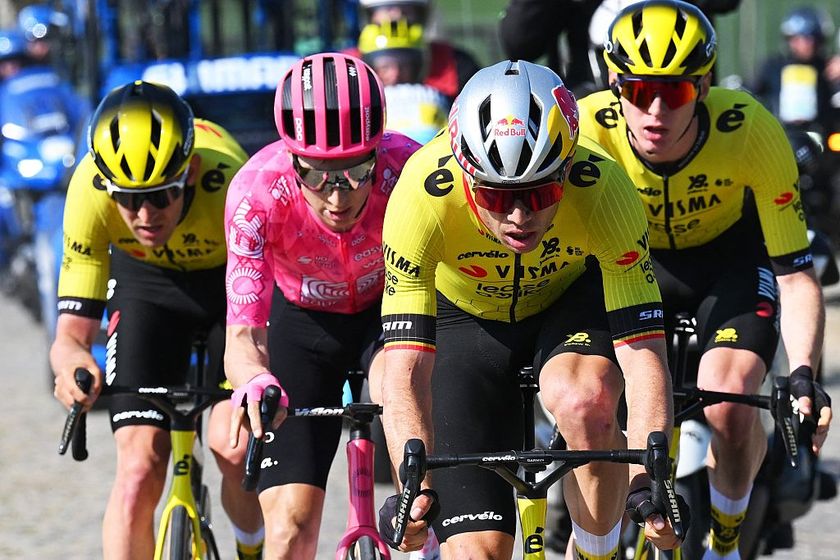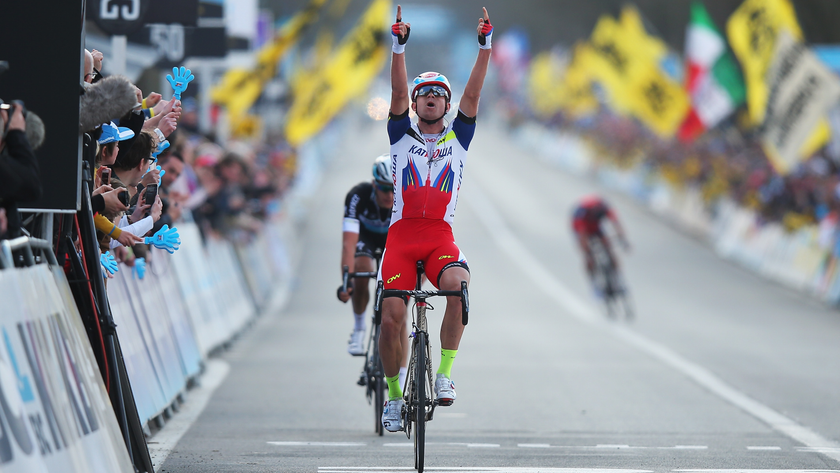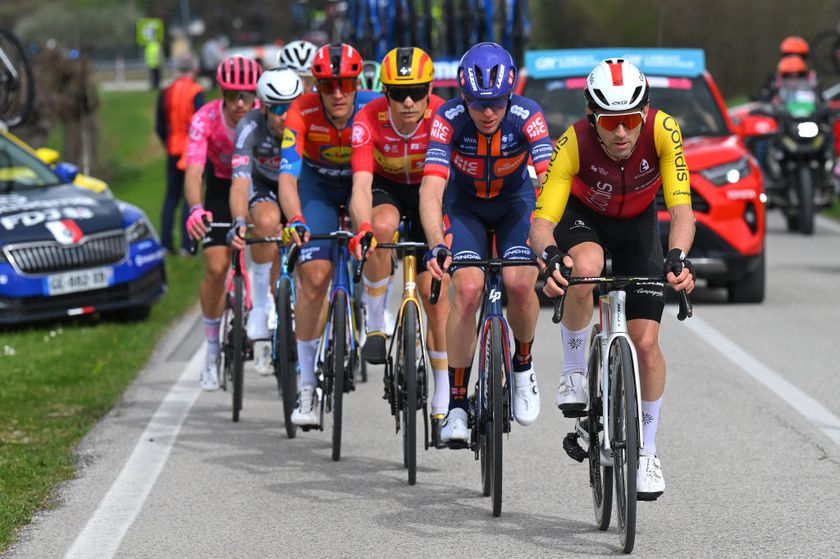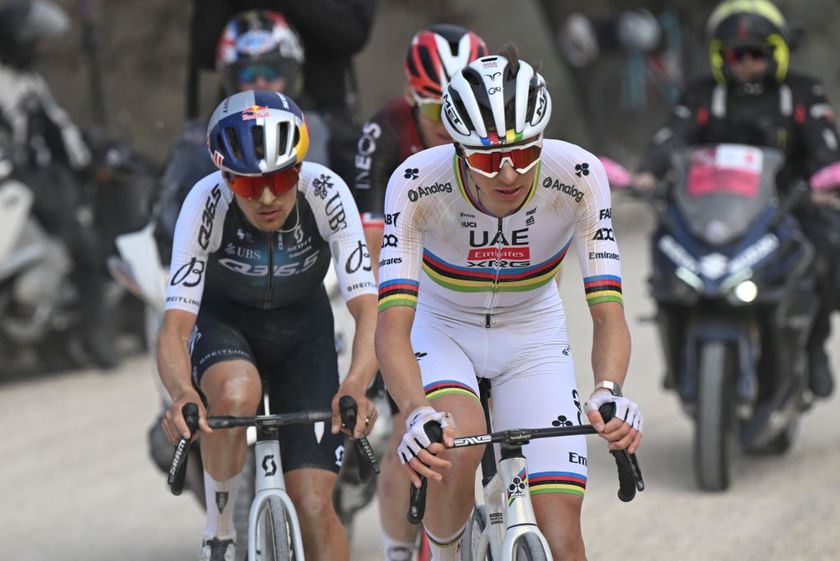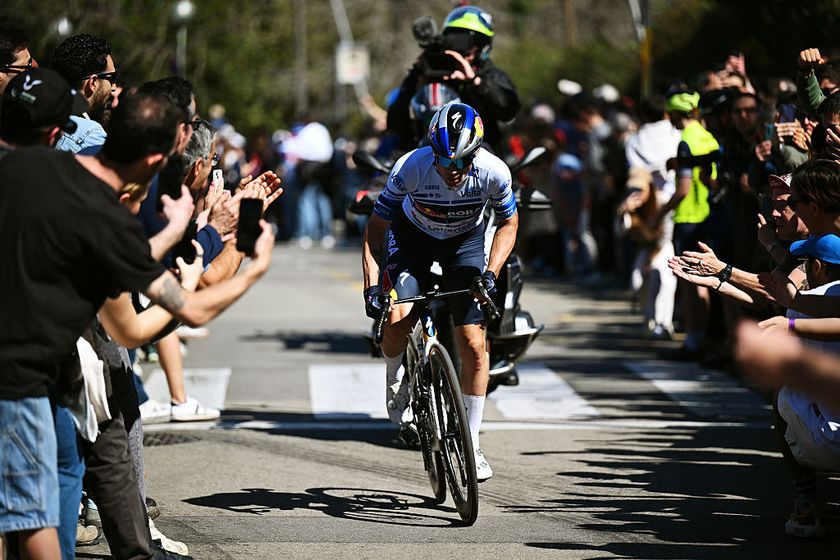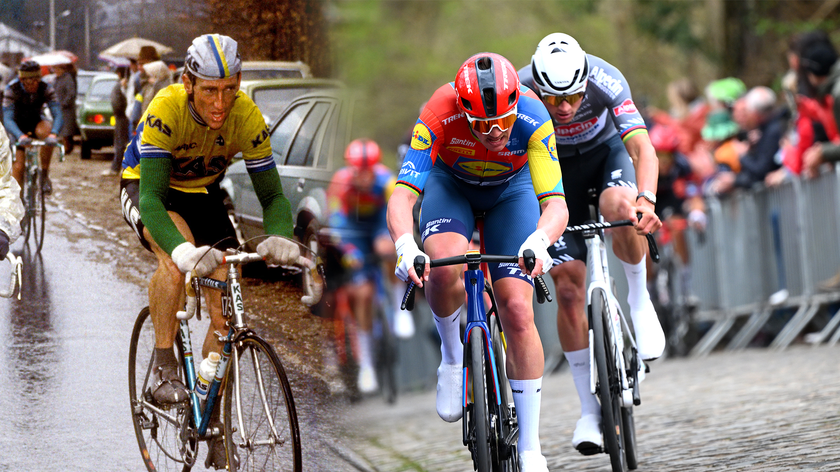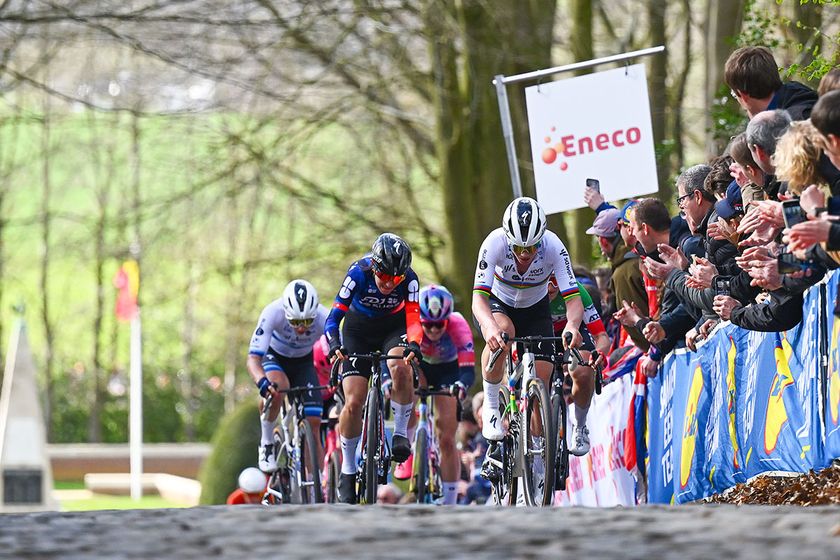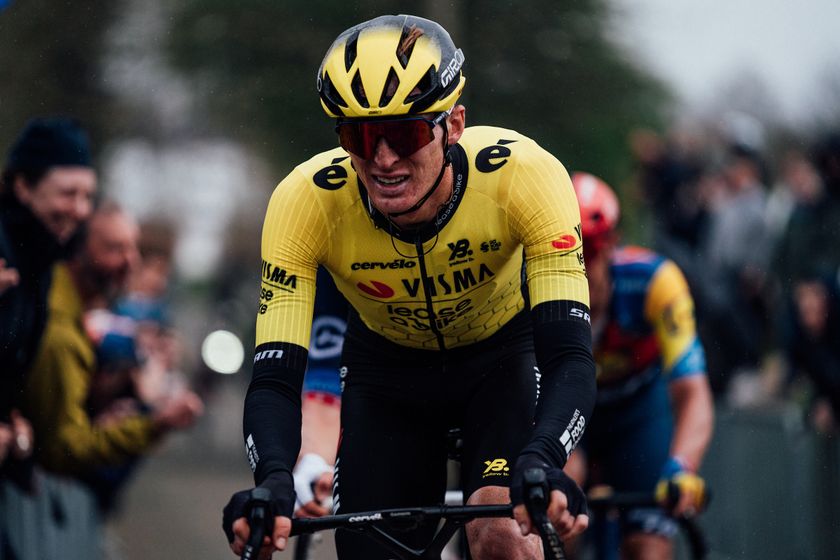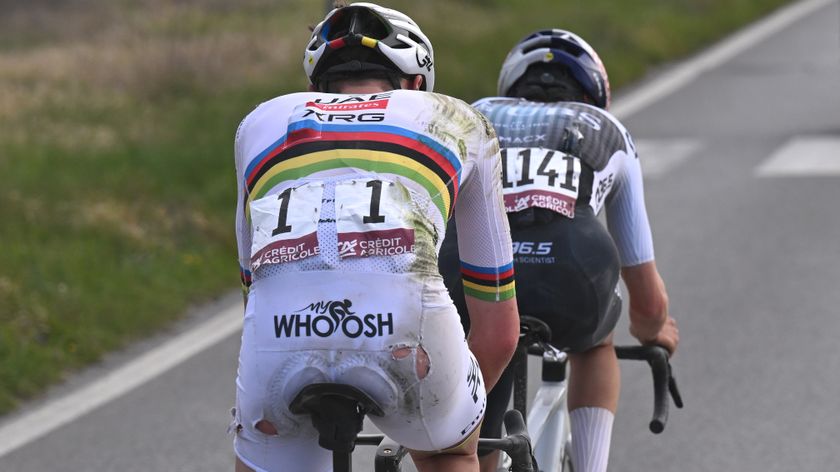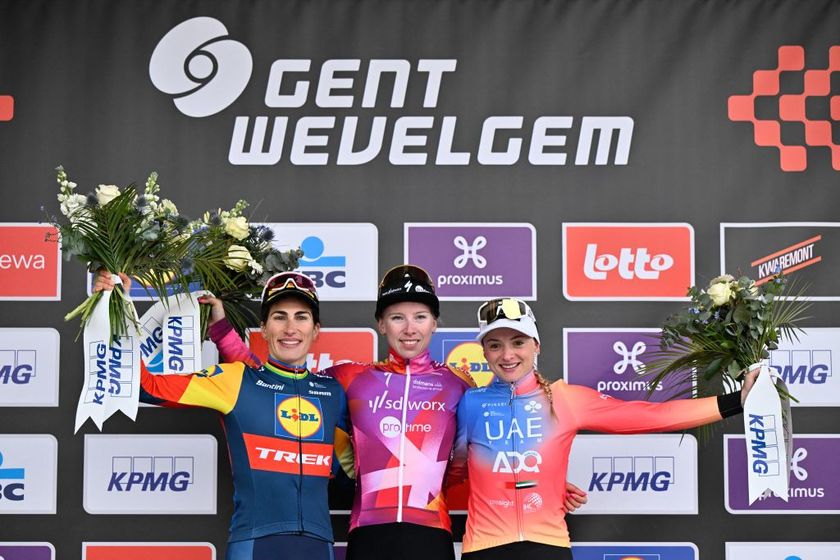Fitness questions and answers for August 22, 2005
Got a question about fitness, training, recovery from injury or a related subject? Drop us a line at...
Form & Fitness Q & A
Got a question about fitness, training, recovery from injury or a related subject? Drop us a line at fitness@cyclingnews.com. Please include as much information about yourself as possible, including your age, sex, and type of racing or riding. Due to the volume of questions we receive, we regret that we are unable to answer them all.
Carrie Cheadle, MA (www.carriecheadle.com) is a Sports Psychology consultant who has dedicated her career to helping athletes of all ages and abilities perform to their potential. Carrie specialises in working with cyclists, in disciplines ranging from track racing to mountain biking. She holds a bachelors degree in Psychology from Sonoma State University as well as a masters degree in Sport Psychology from John F. Kennedy University.
Dave Palese (www.davepalese.com) is a USA Cycling licensed coach and masters' class road racer with 16 years' race experience. He coaches racers and riders of all abilities from his home in southern Maine, USA, where he lives with his wife Sheryl, daughter Molly, and two cats, Miranda and Mu-Mu.
Kelby Bethards, MD received a Bachelor of Science in Electrical Engineering from Iowa State University (1994) before obtaining an M.D. from the University of Iowa College of Medicine in 2000. Has been a racing cyclist 'on and off' for 20 years, and when time allows, he races Cat 3 and 35+. He is a team physician for two local Ft Collins, CO, teams, and currently works Family Practice in multiple settings: rural, urgent care, inpatient and the like.
Fiona Lockhart (www.trainright.com) is a USA Cycling Expert Coach, and holds certifications from USA Weightlifting (Sports Performance Coach), the National Strength and Conditioning Association (Certified Strength and Conditioning Coach), and the National Academy for Sports Nutrition (Primary Sports Nutritionist). She is the Sports Science Editor for Carmichael Training Systems, and has been working in the strength and conditioning and endurance sports fields for over 10 years; she's also a competitive mountain biker.
Eddie Monnier (www.velo-fit.com) is a USA Cycling certified Elite Coach and a Category II racer. He holds undergraduate degrees in anthropology (with departmental honors) and philosophy from Emory University and an MBA from The Wharton School of Business.
Eddie is a proponent of training with power. He coaches cyclists (track, road and mountain bike) of all abilities and with wide ranging goals (with and without power meters). He uses internet tools to coach riders from any geography.
Get The Leadout Newsletter
The latest race content, interviews, features, reviews and expert buying guides, direct to your inbox!
David Fleckenstein, MPT (www.physiopt.com) is a physical therapist practicing in Boise, ID. His clients have included World and U.S. champions, Olympic athletes and numerous professional athletes. He received his B.S. in Biology/Genetics from Penn State and his Master's degree in Physical Therapy from Emory University. He specializes in manual medicine treatment and specific retraining of spine and joint stabilization musculature. He is a former Cat I road racer and Expert mountain biker.
Since 1986 Steve Hogg (www.cyclefitcentre.com) has owned and operated Pedal Pushers, a cycle shop specialising in rider positioning and custom bicycles. In that time he has positioned riders from all cycling disciplines and of all levels of ability with every concievable cycling problem.They include World and National champions at one end of the performance spectrum to amputees and people with disabilities at the other end.
Current riders that Steve has positioned include Davitamon-Lotto's Nick Gates, Discovery's Hayden Roulston, National Road Series champion, Jessica Ridder and National and State Time Trial champion, Peter Milostic.
Pamela Hinton has a bachelor's degree in Molecular Biology and a doctoral degree in Nutritional Sciences, both from the University of Wisconsin-Madison. She did postdoctoral training at Cornell University and is now an assistant professor of Nutritional Sciences at the University of Missouri-Columbia where she studies the effects of iron deficiency on adaptations to endurance training and the consequences of exercise-associated changes in menstrual function on bone health.
Pam was an All-American in track while at the UW. She started cycling competitively in 2003 and is the defending Missouri State Road Champion. Pam writes a nutrition column for Giana Roberge's Team Speed Queen Newsletter.
Dario Fredrick (www.wholeathlete.com) is an exercise physiologist and head coach for Whole Athlete™. He is a former category 1 & semi-pro MTB racer. Dario holds a masters degree in exercise science and a bachelors in sport psychology.
Scott Saifer (www.wenzelcoaching.com) has a Masters Degree in exercise physiology and sports psychology and has personally coached over 300 athletes of all levels in his 10 years of coaching with Wenzel Coaching.
Kendra Wenzel (www.wenzelcoaching.com) is a head coach with Wenzel Coaching with 17 years of racing and coaching experience and is coauthor of the book Bike Racing 101.
Steve Owens (www.coloradopremiertraining.com) is a USA Cycling certified coach, exercise physiologist and owner of Colorado Premier Training. Steve has worked with both the United States Olympic Committee and Guatemalan Olympic Committee as an Exercise Physiologist. He holds a B.S. in Exercise & Sports Science and currently works with multiple national champions, professionals and World Cup level cyclists.
Through his highly customized online training format, Steve and his handpicked team of coaches at Colorado Premier Training work with cyclists and multisport athletes around the world.
Brett Aitken (www.cycle2max.com) is a Sydney Olympic gold medalist. Born in Adelaide, Australia in 1971, Brett got into cycling through the cult sport of cycle speedway before crossing over into road and track racing. Since winning Olympic gold in the Madison with Scott McGrory, Brett has been working on his coaching business and his www.cycle2max.com website.
Richard Stern (www.cyclecoach.com) is Head Coach of Richard Stern Training, a Level 3 Coach with the Association of British Cycling Coaches, a Sports Scientist, and a writer. He has been professionally coaching cyclists and triathletes since 1998 at all levels from professional to recreational. He is a leading expert in coaching with power output and all power meters. Richard has been a competitive cyclist for 20 years
Andy Bloomer (www.cyclecoach.com) is an Associate Coach and sport scientist with Richard Stern Training. He is a member of the Association of British Cycling Coaches (ABCC) and a member of the British Association of Sport and Exercise Sciences (BASES). In his role as Exercise Physiologist at Staffordshire University Sports Performance Centre, he has conducted physiological testing and offered training and coaching advice to athletes from all sports for the past 4 years. Andy has been a competitive cyclist for many years.
Michael Smartt (www.cyclecoach.com) is an Associate Coach with Richard Stern Training. He holds a Masters degree in exercise physiology and is USA Cycling Expert Coach. Michael has been a competitive cyclist for over 10 years and has experience coaching road and off-road cyclists, triathletes and Paralympians.
Kim Morrow (www.elitefitcoach.com) has competed as a Professional Cyclist and Triathlete, is a certified USA Cycling Elite Coach, a 4-time U.S. Masters National Road Race Champion, and a Fitness Professional.
Her coaching group, eliteFITcoach, is based out of the Southeastern United States, although they coach athletes across North America. Kim also owns MyEnduranceCoach.com, a resource for cyclists, multisport athletes & endurance coaches around the globe, specializing in helping cycling and multisport athletes find a coach.
Fitness level
Hypothyroid
Saddle height and possible HR correlation
Bike fit
Exercise bikes
Recovering from broken hip
Fitness level
I am a 34 year old male, who has been riding on and off for about 20 years. In general, I have been active and exercise frequently. When I ride with a heart rate monitor, my heart rate is often about 20 beats faster than my other riding companions. For the most part, I can keep up with or am faster than my riding buddies. My maximum heart rate is about 201 beats/minute, which is also high for my age range, and I can sustain an effort between 180-190 beats per minute for 45 minutes or more. I had a recent physical examination with a general practitioner, and everything is fine (bp 110/70, resting heart rate 55, hematocrit 46%, no chest pain or discomfort). What might account for my higher heart rate? What sorts of tests can I request to get a more accurate measure of my fitness level? What type of doctor should I see for these types of tests? My main interest is in maximizing my performance, and understanding the limitations of my natural physiology (eg VO2 max, heart volume, etc.).Thank you.
Ferdinand Arcinue
Los Angeles
Ferdinand,
Hypothyroid
Hi
Following on from the response to the reply on thyroid function; I recently have had total thyroidectomy and have also recorded a sudden fall in VO2max score following the operation. The only medication I take now is thyroxin to replace what the gland would normally produce. Is there a bearing on Vo2 max and thyroxin levels or do I need to look for explanation in other areas.
It is strange to me that Vo2 max should fall significantly within two weeks of normal training.
James Struthers
UK
James,
James Struthers then responded:
I have been monitoring resting heart rate, max heart rate and VO2 closely following an operation. It seems that even the smallest adjustment in my thyroxin dose has a marked effect on performance.
Metabolic rate, plus resting heart rate and max heart rate are all elevated, and under exertion my performance decreases hugely as heart rate reaches max levels very quickly. At one stage of over treatment an excess of two minutes was added to my 10 mile TT time with heart rate much higher than normal for this event. My VO2 max fell from the normal 65 to 54 within a three-week time span.
I then went through a dose adjustment and maintained a careful training regime including interval training when I felt I could manage it. This time, after a couple of weeks the thyroxin dose was too low. My resting heart rate fell to about 34 bpm from 41 pre-operation. I felt lethargic and cold. During the transition from hyperactivity to hypo activity my VO2 max went back from 54 up to 65 gradually over a couple of weeks and then started to fall again to 61. I struggled to reach target zones in interval training and felt light headed when exerting myself heavily. I took part in a 10 mile TT, and although it was an improvement from when dose levels were high I was still way off my personal best. I am now on a dose in between what was discovered as too high and too low. My VO2 max was tested yesterday at 65. Over the weekend I managed a reasonable result at a mountain bike cross country race and am doing a 10 mile TT tonight.
I appreciate thyroxin takes time to establish itself to suitable dose but I have been recording heart rates, body temp and VO2 max regularly against thyroxin dose levels. There is definitely a trend. Too high and too low dose manifest itself very quickly in terms of performance effects, perhaps even before a marked change in thyroid function blood test results. Even to the extent I believe I can predict with a reasonable degree of accuracy what my TSH, Free T4 and T3 levels are going to be before I get the result (In terms of high, Ok and low.)
I also notice that after taking my thyroxin in the morning and recording heart rate at rest throughout the day there is a peek in HR about 4.5 hrs after taking the dose this reading seems to be consistent and taken before lunch. I have no doubt that thyroxin levels have a huge effect on performance and a small adjustment can have a significant effect.
James Struthers
Well, it certainly sounds like you have got it figured out. I fully believe that most people that are "in tune" with their bodies and attentive can tell when something isn't exactly right, even before the labs and us silly doctors figure it out.
Saddle height and possible HR correlation
I am a 31 year old Cat 3 racer, 5'-7" and 145 lbs. I have been racing for the past 13 years- mountain, road, and 'cross.
I have a slightly "heel-up" pedal stroke, my saddle height has remained the same for about three years now, and I've never experienced knee pain or any other discomfort until just recently, when I had a small amount of pain in the back of my left knee. I lowered my saddle about 4mm after about a week off the bike, and my HR has seemingly dropped during seated tempo efforts by about 5-7 bpm. I've since raised my saddle back up 2mm, and my HR seems to have gone up just slightly from the lower numbers.
As long as I've been wearing a heart rate monitor, I've always had a higher heart rate than most of my similarly aged and physically similar teammates. My current max HR is around 196, and three years ago it was around 204. My tempo HR is between 165-170, and my field-test LT stays between 178-180. Sprinting or intense climbing efforts are consistent with earlier numbers.
Could there be a physiological reason that my HR would correspond to saddle height? Thanks.
Sean Yeager
Richmond, VA USA
Sean,
Bike fit
I am 42 yrs old, 5' 8'', 145 lbs, cat 1 road racer with knee and lower back issues.
I recently had a bike fit using the Serrotta system, and was advised to position the ball of my foot and front of my knee over the pedal axle as my glutes were under-utilised. I also had IT band pain which was severe at times in my right knee mainly, but also occasionally in the left. I tend to pronate, and when standing my feet roll inwards. The knee pain was worse at the start of interval training each year but decreased as I became accustomed to the new stress (not the correct thing to do, I now know). I have now got custom orthotics and Le Wedges with Speedplay Zero pedals/Nike Poggio3 or Shimano 214 shoes, and the knee pain has disappeared.
Subsequent to my fitting I have read your input to Cyclingnews and feel more comfortable with your suggestions on fit than the ball of foot/knee over pedal axle idea. I was a typical cyclist who studied the pros and fitted a low, long stem with the saddle back in the rails because it 'looked good' rather than because it worked. The Serrotta fit was to the other extreme and I have now ended up with something in the middle which I find comfortable and efficient. The reasons given at the bike fit for moving the saddle forward were to better utilise the glutes, but you state that the further forward you sit the more work the quads do and the less work the glutes do. I have a short femur in relation to my shin (the femur is still longer but only just). I take it from your answers on Cyclingnews that this does not matter and my knee (the bump at the top of the shin just below kneecap) should be behind the pedal axle, to a greater or lesser extent, in all cases? Is there an optimum distance/range or is it, as I suspect, down to individual preference and trial and error until you find your most efficient position? I now have my knee about 20 to 25mm behind the pedal axle with cleats positioned just behind the ball of my foot and find this much better for pushing over top dead centre and pulling back through bottom dead centre.
As far as the under-utilisation of the glutes is concerned I believe that my average flexibility in the hamstrings but very flexible lower back was more the cause. I tended to sit with an 'upright' pelvis and then curve forward from the lower back with a stretched arm position to reach the bars. I am now sitting as described above in relation to the pedals but with a straighter more neutral back posture and a shorter stem resulting in less lower back pain. Attention to posture off the bike is helping with this also. What is your opinion of some of the pros who seem to ride with extremely rounded backs (Armstrong on his TT bike springs to mind) - do they just have more accommodating physiques or better physio back-up?
By the way, have you come to any conclusions on the Powercranks yet? I would imagine that for someone with lower back/hip flexor issues there would have to be a lot of maintenance stretching and posture work to be able to use them (I didn't mention that I have reasonably tight hip flexors also!) Would a fixed wheel bike be better this winter to encourage suppleness in the pedal stroke? I do a lot of winter gym training involving leg raises in hanging and prone positions. Will this help with strength in the hip flexors? A combination of the gym work and the fixed wheel perhaps?
I hope you can find time to read and reply to this rather lengthy query.
Keith Smith
UK
Keith,
Exercise bikes
Hello
I am looking at buying an exercise bike for home use and recently bought on which is not very good, it is very jerky and not smooth. I am writng to receive advice on what the best type of resistance is. The one I have is magnetic and like I said not that good. I would be grateful if you could email me back explaing which type would be better. Thankyou.
Kirsty Stanworth
Kirsty,
Recovering from broken hip
Hi,
I'm aged 49, a keen cyclist and hiker. On June 26 this year, I broke my hip (neck of femur) after crossing a pavement lip at an extreme angle. Since leaving hospital after having a compression screw fitted, I have had one brief consultation at the hospital where I was told that despite bone and scar appearing to heal ok, "you'll never be what you were" and the scale of the loss is equivalent to a "premiership footballer having to stop playing and go into management".
I'm due to attend hospital again in two months but I would be most grateful if you could point me in the direction of any useful information regarding similar injuries. Most of the sites I have found seem to be concerned with THR.
Roy Ferretti
Bolton, England
Roy,
